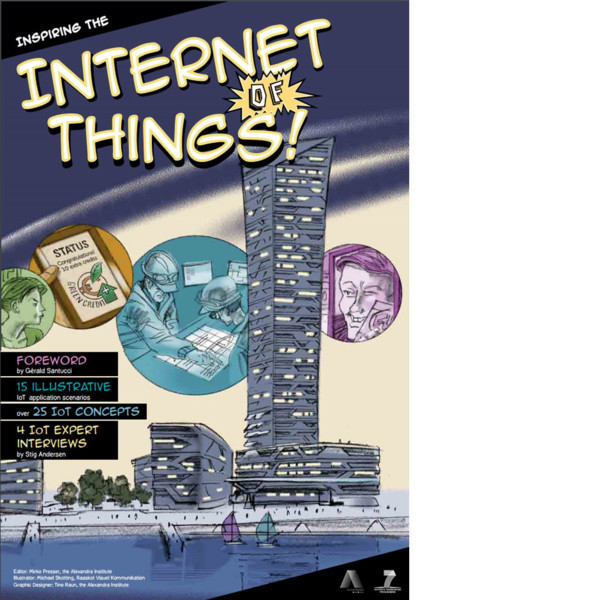INTERNET OF THINGS AND APPLICATIONS
The Internet of Things is an emerging topic of technical, social, and economic significance. Consumer products, durable goods, cars and trucks, industrial and utility components, sensors, and other everyday objects are being combined with Internet connectivity and powerful data analytic capabilities that promise to transform the way we work, live, and plays. Internet, a revolutionary invention, is always transforming into some new kind of hardware and software making it unavoidable for anyone.
The form of communication that we see now is either human-human or human-device, but the Internet of Things (IoT) promises a great future for the internet where the type of communication is machine-machine (M2M). This paper aims to provide a comprehensive overview of the IoT scenario and reviews its enabling technologies and the sensor networks. The paper concludes with a discussion of social and governance issues that are likely to arise as the vision of the Internet of Things becomes a reality.
The Internet of Things (IoT) is an important topic in technology industry, policy, and engineering circles and has become headline news in both the specialty press and the popular media. This technology is embodied in a wide spectrum of networked products, systems, and sensors, which take advantage of advancements in computing power, electronics miniaturization, and network interconnections to offer new capabilities not previously possible.
The next wave in the era of computing will be outside the realm of the traditional desktop. In the Internet of Things (IoT) paradigm, many of the objects that surround us will be on the network in one form or another. Radio Frequency Identification (RFID) and sensor network technologies will rise to meet this new challenge, in which information and communication systems are invisibly embedded in the environment around us.
The concept of IoT dates back to 1982 when a modified coke machine was connected to the Internet which was able to report the drinks contained and that whether the drinks were cold Later, in 1991, a contemporary vision of IoT in the form of ubiquitous computing was first given by Mark Weiser However in 1999, Bill Joy gave a clue about Device to Device communication in his taxonomy of internet. In the very same year, Kevin Ashton proposed the term ”Internet of Things” to describe a system of interconnected devices.
The basic idea of IoT is to allow autonomous exchange of useful information between invisibly embedded different uniquely identifiable real world devices around us, fueled by the leading technologies like Radio-Frequency Identification (RFID) and Wireless Sensor Networks (WSNs) which are sensed by the sensor devices and further processed for decision making, on the basis of which an automated action is performed. Vision: In 2005, ITU reported about a ubiquitous networking era in which all the networks are interconnected and everything from tires to attires will be a part of this huge network
IoT Applications: Most of the daily life applications that we normally see are already smart but they are unable to communicate with each other and enabling them to communicate with each other and share useful information with each other will create a wide range of innovative applications. These emerging applications with some autonomous capabilities would certainly improve the quality of our lives.
A few of such applications are already in the market, let’s take the example of the Google Car which is an initiative to provide a self-driving car experience with real-time traffic, road conditions, weather and other information exchanges, all due to the concept of IoT. There are a number of possible future applications that can be of great advantage. In this section, we present few of these applications.
VISIT OUR WEBSITE:
Abstract Submission: https://x-i.me/sacon
Conference Reg: https://x-i.me/sareg1
Award Nomination: https://x-i.me/iotnom
Award Reg: https://x-i.me/sares2
Member Nomination: https://x-i.me/iotmem
#internet#technology#automation#cloudcomputing#edgecomputing#protocals#dishwasher#5gNetworks#4gNetwork#technology conferences#






No comments:
Post a Comment